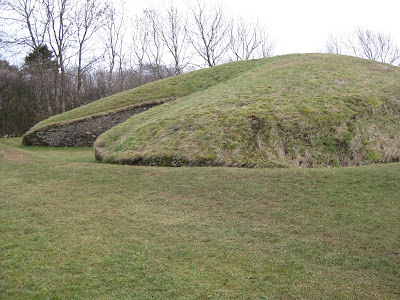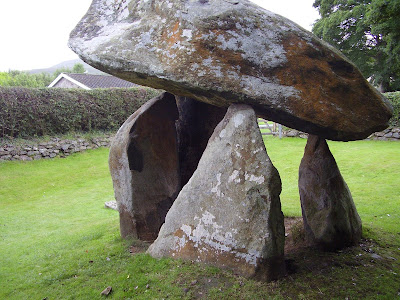 (click photos to enlarge).
(click photos to enlarge).Yesterday I visited The Rollright Stones in North Oxfordshire near to the village of
Long Compton.

The stones are actually split over three separate sites:
The stone circle is popularly known as
The King's Men and is thought to date back to late Neolithic or early Bronze Age. It is 33 metres in diameter and consists of about 70 stones.
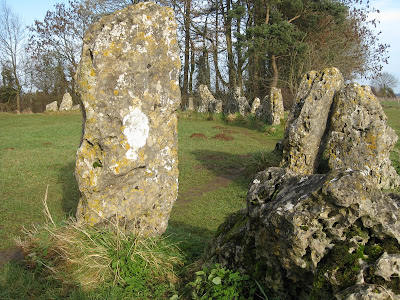
It is said that you cannot accurately count the stones that make up
The King's Men, as the total will be different each time. We tried this on a previous visit and indeed we had trouble deciding on a total - but part of the problem is deciding what constitutes a single stone where perhaps a stone has cracked or been broken, or else where what appears to be two stones might just be the same stone beneath the surface.

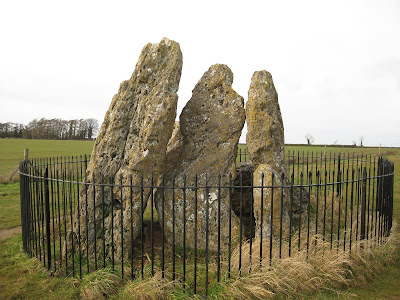 The Whipsering Knights
The Whipsering Knights (above) appear to be a small grouping of standing stones huddled together as if holding a private conversation; it is believed that this formation is the remains of a collapsed burial chamber. There are four uprights and a large recumbent stone which was probably the capstone. These are situated to the east of
The King's Men and just a short walk away.
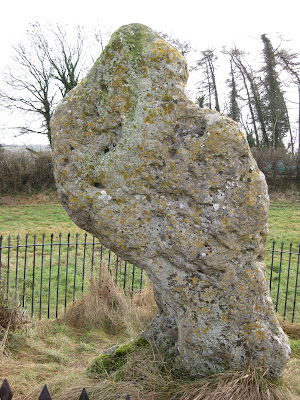
Finally, just over the road from
The King's Men and over the county border too and into Warwickshire, is a lone standing stone called
The King's Stone (above). It is a very peculiar shape, although this is partly because in the days before it had a fence erected around it vistors would chisel off chunks of it to keep as souvenirs!

In the past The Rollright Stones were one of the few ancient monuments that I have visited where you have to pay a (small) entry fee. I have absolutely no problem with this. The fee, of course, went to the upkeep of the site. There used to be a hut at the entrance where an affable old gentleman would take your entrance fee and would tell you about the stones should you have any questions. He would even lend you a pair of divining rods if your interests and beliefs lay in that direction.

But unfortunately we live in sorry times. The old man and the hut have gone. The old man has sadly died and the hut was burnt down by vandals. Vandals have attacked the stones on various occasions, covering them in yellow paint on one occasion, and burning them on others. Obviously, these acts of mindless destruction mean expensive and painstaking clean-up work. What I find most alarming is that these are not random acts of vandalism but that they must have been pre-meditated. Someone has specifically made the journey with the express intention of attacking the stones.

On this visit there was no-one collecting entry fees. I didn't even see a box for donations.I am hoping that the Rollright Trust and/or the Friends of The Rollright Stones have not thrown in the towel and given up. I thought they had been doing an excellent job. What other group of stones has its own
website? I like that you can download an audio tour and play it on you iPod as you walk around the stones.
To sum up, this is a lovely site which needs your support.
Date visted: 17 January 2009See also:
 (Click photos to enlarge).
(Click photos to enlarge).



